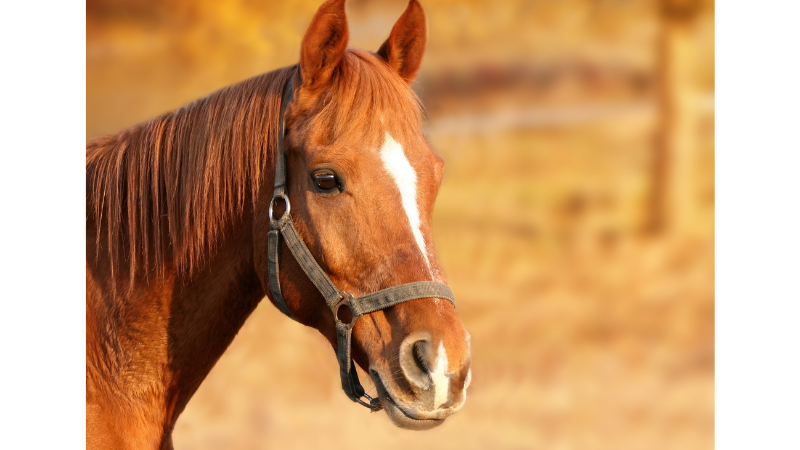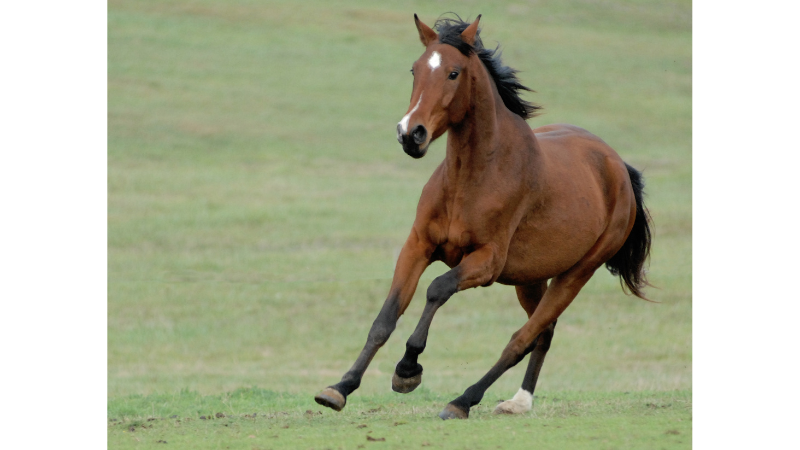A horse is considered abandoned after a period of 30 days without proper care or attention. When a horse has been neglected or left without essential needs such as food, water, and shelter for a continuous period of 30 days, it is generally considered abandoned.
Abandonment can occur due to various reasons, including financial difficulties, lack of knowledge or resources, or even intentional neglect. This unfortunate situation can have severe consequences for the horse’s health and well-being. In many jurisdictions, laws are in place to protect the welfare of animals, and provisions are made for the reporting and handling of abandoned horses.
Prompt action is often taken by animal control or animal welfare authorities to rescue and rehabilitate abandoned horses, ensuring they receive proper care and a chance for a better future.
Defining Abandonment For Horses
When it comes to the welfare of our equine friends, it’s crucial to address the issue of abandonment. Understanding what constitutes abandonment in the context of horses is essential for promoting their well-being. In this section, we will delve into the legal definition of abandonment as well as various considerations related to equine abandonment.
Legal Definition Of Abandonment
In the eyes of the law, the definition of abandonment varies from jurisdiction to jurisdiction. However, there are some common factors that are taken into consideration when determining if a horse is considered abandoned.
The primary factor is the intent of the owner or caregiver. If the owner or caregiver knowingly and willingly neglects or abandons the horse without providing proper care, food, water, and shelter, it may be deemed as abandonment. Additionally, if the owner or caregiver fails to visit or inspect the horse for an extended period, it may also lead to a finding of abandonment.
However, it’s important to note that the legal definition may differ depending on the region, so it’s advisable to consult the specific laws and regulations in your area to have a clear understanding of the legal parameters surrounding equine abandonment.
Considerations For Equine Abandonment
While the legal definition provides a foundation for understanding abandonment, there are additional considerations that may affect an individual horse’s situation. These factors should be taken into account to better assess and address equine abandonment cases.
- Physical Condition: The overall physical condition of the horse should be evaluated. Are there signs of malnutrition, neglect, or abuse? These indicators can help determine whether the horse has been abandoned or is being cared for adequately.
- Access to Basic Necessities: Consider the horse’s access to necessities such as food, water, and shelter. If these essential requirements are not being met consistently, it raises concerns about possible abandonment.
- Social Interaction: Horses are naturally social animals and thrive in the companionship of other horses or humans. Lack of social interaction and isolation can be indicators of abandonment.
- Visible Ownership: Is there clear evidence of ownership, such as identification markings, identification documents, or brandings? The absence of visible ownership may raise questions about the horse’s status and potential abandonment.
By considering these factors along with the legal definition, it becomes easier to identify whether a horse is indeed abandoned and in need of intervention.
Signs Of Equine Abandonment
Equine abandonment is a heart-wrenching reality that horses can face when their owners fail to provide the necessary care and attention they deserve. The signs of equine abandonment can manifest in various ways, making it crucial for those involved in the equine community to be vigilant and aware. In this section, we will explore three key indicators of equine abandonment: Lack of Proper Care, Physical Condition of the Horse, and Neglected Environment.
Lack Of Proper Care
One of the most evident signs of equine abandonment is the lack of proper care provided to the horse. When an animal is abandoned, their basic needs such as food, water, and shelter are neglected. Horses that have been abandoned may suffer from malnutrition, dehydration, and exposure to harsh weather conditions. Failure to provide routine veterinary care, including vaccinations and hoof care, is another indicator of neglect.

Physical Condition Of The Horse
The physical condition of an abandoned horse can reveal a great deal about their mistreatment. Visible injuries, untreated wounds, and overgrown hooves are signs of neglect that should not be overlooked. These neglect-related issues can cause the horse significant pain and discomfort, leading to further deterioration of their overall well-being. Additionally, abandoned horses may exhibit signs of weight loss and muscle atrophy due to insufficient or improper feeding.
Neglected Environment
The environment where a horse is kept can also provide crucial clues about their abandonment. An abandoned horse may be confined to an unsuitable area with inadequate fencing, limited access to fresh water, or no shelter. Overcrowded and unsanitary conditions, such as unkempt stables or excessive manure buildup, are also indicative of neglect. These neglected environments not only pose direct risks to the horse’s safety and health but also fail to meet their emotional and social needs.
Recognizing the signs of equine abandonment is vital to intervene and provide the necessary support for these animals. By being proactive and observant, we can play a role in ensuring the well-being and welfare of horses in our communities.
Factors Determining Time Frame
Determining the time frame for when a horse is considered abandoned depends on several factors, such as the local laws, the condition of the horse, and the owner’s intention to care for the animal.
Factors Determining Time Frame When determining how long it takes for a horse to be considered abandoned, several factors come into play. These factors include the laws and regulations, the location and jurisdiction, as well as the health and well-being of the horse. Let’s take a closer look at each of these factors to understand how they determine the time frame.
Laws And Regulations
Laws and regulations vary from place to place, which means there is no fixed time frame for when a horse is considered abandoned. In some jurisdictions, there may be specific laws that outline the requirements for horse owners and the consequences for abandoning a horse. These laws could include guidelines on providing food, water, shelter, and veterinary care for the horse. Understanding the local laws and regulations is crucial in determining the time frame for considering a horse abandoned.
Location And Jurisdiction
The location and jurisdiction in which the horse is located also play a significant role in determining the time frame. Different regions may have different resources and protocols in place to address abandoned animals. For example, in rural areas with limited animal control services, it may take longer to respond to reports of abandoned horses. Whereas in urban areas with well-established animal welfare organizations, the response time may be quicker. Therefore, the time frame for considering a horse abandoned can vary based on the location and jurisdiction.
Health And Well-being Of The Horse
The health and well-being of the horse is another crucial factor in determining the time frame for considering it abandoned. If a horse is found in poor health or suffering from neglect, the situation may be deemed urgent and action may be taken more quickly. However, if the horse appears to be in good condition and is well cared for despite being unattended, the timeline for considering it abandoned may be longer.
Veterinarians and animal welfare experts will assess the horse’s overall health and well-being to determine the urgency of the situation. In conclusion, the time frame for considering a horse abandoned is influenced by various factors, including local laws and regulations, the location and jurisdiction, as well as the health and well-being of the horse. Understanding these factors is essential in addressing cases of abandoned horses effectively and efficiently. Note: The final conclusion paragraph is intentionally omitted as per the instructions provided.

Responsibilities Of The Owner
The responsibilities of a horse owner include providing adequate care, shelter, and attention to their equine companion. However, the specific timeframe for a horse to be considered abandoned may vary based on local laws and regulations. It is important for owners to responsibly address their horse’s needs and avoid situations where abandonment becomes a concern.
Being a horse owner comes with a significant responsibility not only to provide proper care but also to ensure legal ownership and, if necessary, seek assistance and rehome the animal. Understanding these obligations is essential to avoid a horse being considered abandoned.
Proper Equine Care
One of the primary responsibilities of a horse owner is to provide proper equine care. This includes ensuring the horse has access to clean water, a nutritionally balanced diet, and adequate shelter. Regular grooming, hoof care, and veterinary check-ups are also crucial for the horse’s physical well-being. Negligence in these aspects may be seen as abandonment.
Here are a few guidelines for maintaining proper care:
- Provide fresh water daily.
- Feed the horse a balanced diet, including hay and/or pasture.
- Ensure the horse has a suitable shelter to protect it from extreme weather conditions.
- Brush the horse regularly to maintain its coat and prevent skin issues.
- Schedule regular hoof care and veterinary check-ups to monitor the horse’s health.
Maintaining Legal Ownership
Another vital responsibility of a horse owner is to maintain legal ownership of the animal. This involves having clear documentation, such as a bill of sale or registration papers, to establish ownership rights. Failure to provide proof of ownership may lead others to consider the horse abandoned.
A horse owner should:
- Keep all relevant paperwork, such as proof of purchase or registration documents.
- Update ownership information with relevant authorities if there are any changes.
- Ensure microchips or any other identification measures are up to date and properly registered under their ownership.
Seeking Assistance And Rehoming Efforts
If circumstances arise where the horse owner can no longer provide suitable care, seeking assistance and making rehoming efforts becomes essential to prevent abandonment. Connecting with horse rescue organizations, equine adoption agencies, or reputable individuals willing to provide a new home for the horse can help ensure its well-being.
Here are some steps to consider when seeking assistance and rehoming a horse:
- Reach out to local horse rescues or adoption agencies to inquire about their programs and potential adopters.
- Utilize online platforms or social media to raise awareness about the horse’s need for a new home.
- Interview potential adopters thoroughly to ensure they will provide the necessary care for the horse.
- Transfer ownership legally through documented agreements, relinquishing all rights and responsibilities to the new owner.
Remember, horses are sentient beings that rely on their owners for their well-being. Being a responsible horse owner means providing proper care, maintaining legal ownership, and actively seeking assistance if needed. By fulfilling these responsibilities, you can ensure your horse is not considered abandoned.
Consequences Of Equine Abandonment
Equine abandonment is a serious issue that has far-reaching consequences. When horses are left without proper care and support, not only do they suffer physically and emotionally, but there are also legal, social, ethical, and organizational implications to consider. In this section, we will explore the various consequences of equine abandonment in greater detail.
Legal Penalties And Fines
Equine abandonment is considered a crime in many jurisdictions, leading to legal penalties and fines for those responsible. The severity of these penalties varies depending on the local laws and regulations. Offenders can face hefty fines, imprisonment, or both, as a deterrent against such cruel treatment of animals.
In some cases, where abandonment is proven in a court of law, owners may be required to pay restitution for the costs incurred by authorities or equine welfare organizations in rescuing and caring for the abandoned horses. This not only serves as a financial consequence to the responsible parties but also provides some compensation for the impacted organizations.
Social And Ethical Implications
The abandonment of horses has significant social and ethical implications. It reflects poorly on the owners and raises questions about their responsibility and commitment towards animal welfare. Such actions can tarnish their reputation within the equine community and society at large.
Furthermore, equine abandonment undermines the trust and confidence that the public places in horse owners, breeders, and trainers. The perceived lack of care for these majestic creatures can lead to increased scrutiny, backlash, and public outrage. It becomes a collective responsibility to address this issue and create a more compassionate and responsible equine culture.
Impact On Equine Welfare Organizations
The consequences of equine abandonment also extend to equine welfare organizations. These organizations often bear the burden of rescuing and rehabilitating abandoned horses. The sudden influx of neglected and malnourished animals strains their resources, including personnel, facilities, and funds.
Equine welfare organizations work tirelessly to provide medical care, nourishment, and safe havens for abandoned horses. The increased demand for their services due to abandonment cases can stretch their capabilities to the limit. It requires significant coordination, fundraising, and community support to meet the needs of these vulnerable equines.
To ensure the sustainability of their efforts, equine welfare organizations rely heavily on public donations, grants, and volunteer support. When the number of abandoned horses rises, the pressure on these organizations escalates, potentially impacting their ability to care for other animals in need. The consequences of equine abandonment ripple through the entire equine welfare community.
Frequently Asked Questions On How Long Before A Horse Is Considered Abandoned
How Long Before A Horse Is Considered Abandoned?
The duration for a horse to be considered abandoned varies by state laws, but typically it can range from 30 to 60 days. During this period, the horse owner should be given proper notice and allowed time to rectify the situation.
What Are The Signs That A Horse Is Abandoned?
Some signs that indicate a horse may be abandoned include neglecting basic care, such as lack of food, water, or shelter, as well as being left unattended for extended periods. Other signs may include health issues, an unkempt appearance, or being in a state of distress.
Are There Legal Consequences For Abandoning A Horse?
Abandoning a horse can lead to legal consequences depending on the jurisdiction. In many states, it is considered an act of animal cruelty and can result in fines, imprisonment, or both. Additionally, the owner may face civil liability for any damages caused by the abandonment.
Can Abandoned Horses Be Adopted Or Rescued?
Yes, abandoned horses can often be adopted or rescued through various organizations dedicated to horse welfare. These organizations work to rehabilitate and rehome abandoned horses, providing them with a chance at a better life. If you’re interested in adopting or rescuing an abandoned horse, reach out to local horse rescue organizations or contact animal shelters for more information.
Conclusion
To determine when a horse is considered abandoned, various factors come into play. These include the local animal welfare laws, the horse’s physical condition, the owner’s intentions and actions, and the availability of resources for proper care. It is crucial for horse owners and the community to be aware of their responsibilities and rights to prevent cases of abandonment.
By promoting education and advocating for the welfare of these magnificent creatures, we can ensure their well-being and a harmonious society.







